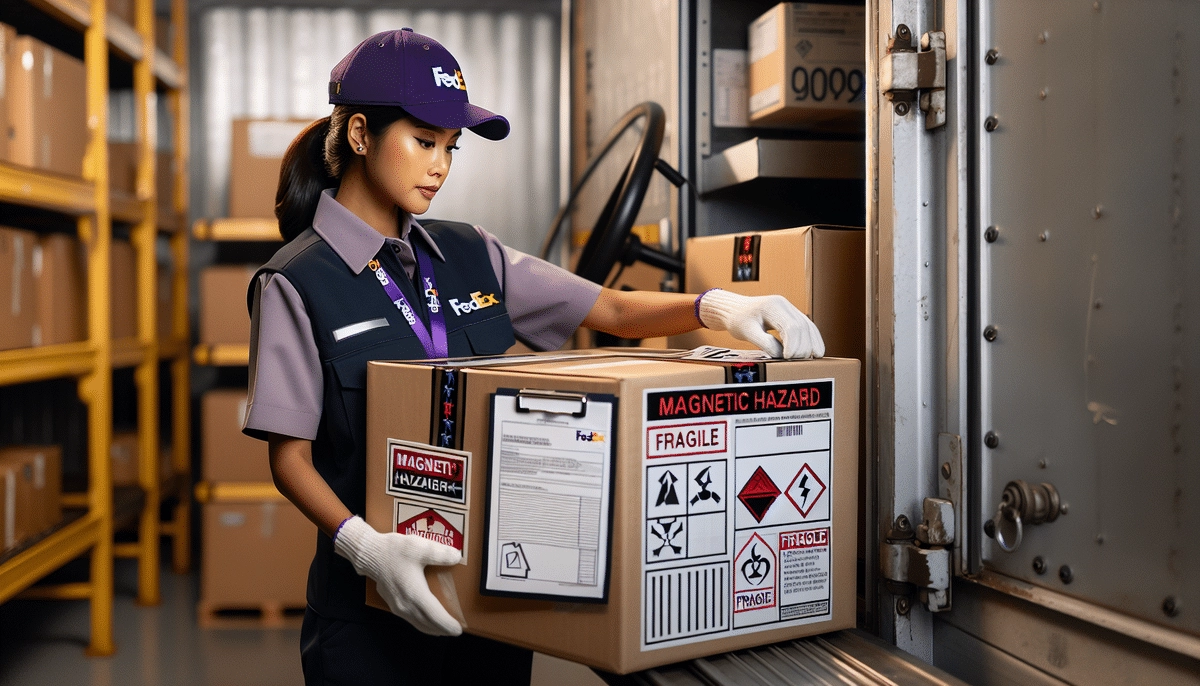Shipping magnets isn’t as simple as tossing them in a box and hitting “send.” Strong neodymium magnets pose unique challenges—especially when it comes to navigating strict rules and safety guidelines enforced by agencies like the IATA and FAA. Fail to measure and package them properly, and you risk costly delays, fines, or even hazardous accidents during transport. Whether you’re an engineer, logistics pro, or business owner, mastering these regulations is critical to shipping safely and efficiently. In this guide, we’ll cut through the red tape with clear, practical insights on shipping magnets—from flux limits to packaging strategies—empowering you to move your magnetic materials worry-free.
Understanding Magnet Shipping Regulations: Key Authorities and Classifications
Shipping magnets involves navigating a specific set of rules designed to ensure safety during transport. Various authorities regulate magnetized material shipments, classifying magnets based on strength and potential hazards.
Key Authorities to Know:
- IATA (International Air Transport Association): Governs most air shipments through regulations like Packing Instruction 902, which outlines how magnets must be packaged and labelled.
- FAA (Federal Aviation Administration): Sets limits on magnetic fields for air transport, using flux measurement guidelines to assess safety.
- DOT (Department of Transportation) and PHMSA (Pipeline and Hazardous Materials Safety Administration): Oversee ground and intermodal transport of magnets as Dangerous Goods Class 9 materials.
- USPS (United States Postal Service): Has special mailing rules for magnets, often differing from commercial couriers.
Magnet Classifications:
- Strong Rare Earth Magnets (like neodymium) require careful handling due to their intense magnetic fields.
- Weak or Shielded Magnets that meet specific field thresholds can be shipped with fewer restrictions.
- Magnets are evaluated by their magnetic flux density and how far their magnetic fields extend, often measured in milligauss.
Understanding where your magnets fit within these classifications—and which authorities apply—helps you avoid fines, delays, or safety incidents. The next step involves measuring your magnets’ fields to ensure you meet critical safety thresholds.
Critical Safety Thresholds: Measuring and Meeting Magnetic Field Limits
When shipping magnets, it’s crucial to know the safety thresholds set by regulators. Magnets strong enough to interfere with aircraft instruments or other sensitive equipment fall under strict rules, often categorized as Dangerous goods Class 9 magnets. To comply, shipments must stay within magnetic field limits—typically measured in milligauss.
You’ll need tools like a milligauss meter for shipping to check the magnetic flux density around your packages. The FAA flux measurement guidelines recommend keeping emissions within safe limits to prevent interference with navigation and communication systems. In fact, IATA Packing Instruction 902 sets specific magnetic field limits for air transport that you must meet.
Keep in mind these thresholds depend on the magnet’s strength and how close it is to aircraft systems during transit. For strong magnets like neodymium ones, extra care and accurate measurements are vital to remain compliant with magnetized material regulations. If you’re dealing with rare earth magnets, using tested packaging and shielding is necessary to reduce stray magnetic fields.
Understanding and respecting these critical safety thresholds not only protects other shipments and transport systems but also keeps your cargo from being delayed or rejected. For insights on how magnets retain their power during transport, see our explanation of remanence.
Packaging Strategies: Proven Techniques to Shield and Secure Your Shipment

When shipping magnets, proper packaging is crucial to meet magnetized material regulations and protect both your shipment and those handling it. Strong magnets, especially rare earth or neodymium types, can interfere with electronic devices and pose safety risks if not shielded properly.
Here are key packaging tips to keep your shipment safe and compliant:
- Use Shielding Materials: Incorporate steel or magnetic shielding sheets around magnets to contain the magnetic field. This reduces exposure and helps meet FAA flux measurement guidelines.
- Separate Multiple Magnets: Keep magnets apart or use spacers to prevent them from snapping together, which can damage the magnets and packaging.
- Double Box Packaging: Place the magnet in a secure inner container, then box it again with cushioning materials like foam or bubble wrap to absorb shocks.
- Label Correctly: Follow IATA Packing Instruction 902 by labeling packages with the proper dangerous goods Class 9 magnets markings, warning handlers of magnetic materials inside.
- Test Magnetic Field: Use a milligauss meter for shipping to measure the external magnetic field of your packed magnets. Ensure it’s under thresholds defined by carriers and regulatory bodies.
Using proven rare earth magnet packaging techniques not only protects your product but also ensures smooth shipment without delays or fines. For more details on magnet types and their handling, check out our guide on types of magnets.
Carrier-Specific Guidelines: Navigating FedEx, UPS, USPS,DHL and other International Couriers
Shipping magnets isn’t one-size-fits-all—each carrier has its own rules you need to follow closely. For example, FedEx and UPS classify strong neodymium magnets under Dangerous Goods Class 9, requiring you to meet strict packaging and labelling standards as per IATA Packing Instruction 902. Both carriers often demand a clear declaration of magnetized material and may need you to measure the magnetic field strength with a milligauss meter for shipping to prove compliance.
The USPS has somewhat different restrictions. They allow mailing of certain magnetized materials, but only at limited strengths and packaged carefully to prevent damage to aircraft or other mail. Their USPS magnet mailing rules specify how much magnetic flux is acceptable, so checking their guidelines before shipping is a must.
If you’re sending magnets overseas, be prepared for extra hoops. International couriers often tighten controls in line with international magnet export compliance standards. This can include additional paperwork, customized labels, and occasionally proof of the modest magnetic field under FAA flux measurement guidelines. Consulting your courier’s specific policies—even for smaller shipments—helps avoid costly delays.
Remember, certain magnet types like rare earth materials need special packaging techniques to shield strong magnets for transport safely. You might find helpful tips from industry sources about rare earth magnet packaging techniques, ensuring your shipment meets carrier-specific protocols without hassle.
By aligning your packaging and documentation exactly with FedEx, UPS, USPS,DHL or international courier demands, you’ll keep shipments moving smoothly and avoid surprises at the dock.
Documentation and Training: Ensuring Compliance Every Step of the Way
Shipping magnets isn’t just about packaging; the right documentation and proper training are key to staying compliant and safe. Because magnetized materials are classified as dangerous goods Class 9 magnets under regulations like IATA Packing Instruction 902, you must complete accurate shipping papers that clearly state the magnetic nature of your package. Missing or incorrect documentation can delay shipments or result in hefty fines.
Training staff to understand magnet shipping rules—especially carriers’ protocols from FedEx, UPS, USPS,DHL and international couriers—is crucial. Everyone involved should know how to measure magnetic fields properly using tools like a milligauss meter for shipping and understand FAA flux measurement guidelines to verify safety thresholds. This helps avoid risks associated with non-compliance and keeps your shipments moving smoothly.
Investing in regular training sessions and keeping up-to-date shipping manuals will ensure your team is confident handling rare earth magnet packaging techniques as well as the evolving international magnet export compliance requirements. For reliable magnet supplies that meet packaging and shipping standards, consider trusted sources like NBAEM, your best neodymium magnet supplier from China, which offers quality products aligned with these guidelines.
Consistent paperwork and knowledgeable staff form your first line of defense in protecting people, packages, and profits during magnet transport.
Risks, Hazards, and Mitigation: Protecting People, Packages, and Profits
Shipping magnets comes with specific risks that can impact safety and your bottom line. Strong magnetic fields can interfere with electronic devices, pose health risks for people with medical implants, and even cause damage to other packages nearby. These hazards make it essential to follow strict magnetized material regulations and use proper mitigation strategies.
Key risks include:
Interference with navigation and communication devices
Airlines and couriers enforce FAA flux measurement guidelines to keep magnetic fields below critical limits, preventing interference with aircraft instruments.
-
Physical injury or damage from strong magnets
Rare earth magnets can snap together or attract metal objects with high force, causing injuries. Proper shielding strong magnets for transport is a must to avoid such accidents.
-
Package damage and shipment delays
Magnets not packed correctly can affect other shipments, leading to rejection or costly returns. Using proven rare earth magnet packaging techniques helps avoid these issues.
Mitigation steps to protect your shipment:
- Use certified shielding materials to reduce magnetic fields well within IATA Packing Instruction 902 limits.
- Regularly check magnetic field strength with a milligauss meter for shipping before dispatch.
- Clearly label packages following Dangerous Goods Class 9 magnets rules to alert handlers.
- Train your staff on USPS magnet mailing rules and international magnet export compliance to avoid surprises during transit.
Being aware of these risks and applying solid safety precautions helps protect people, keeps your packages intact, and safeguards your profits from unexpected shipping complications. For more insights on magnet types and strengths, exploring materials like neodymium magnets can be useful, as described in our article about what is neomagnet.





Leave A Comment